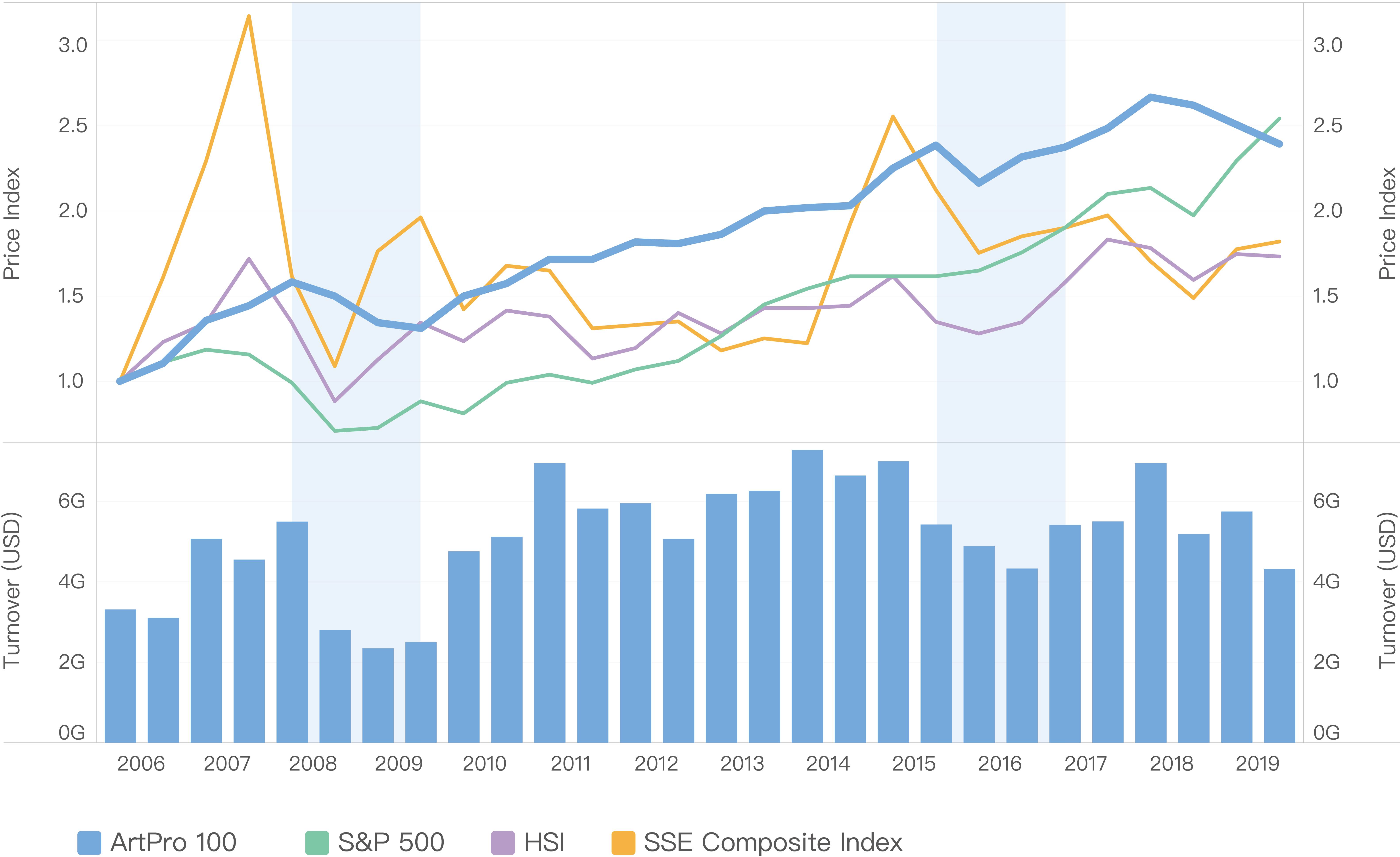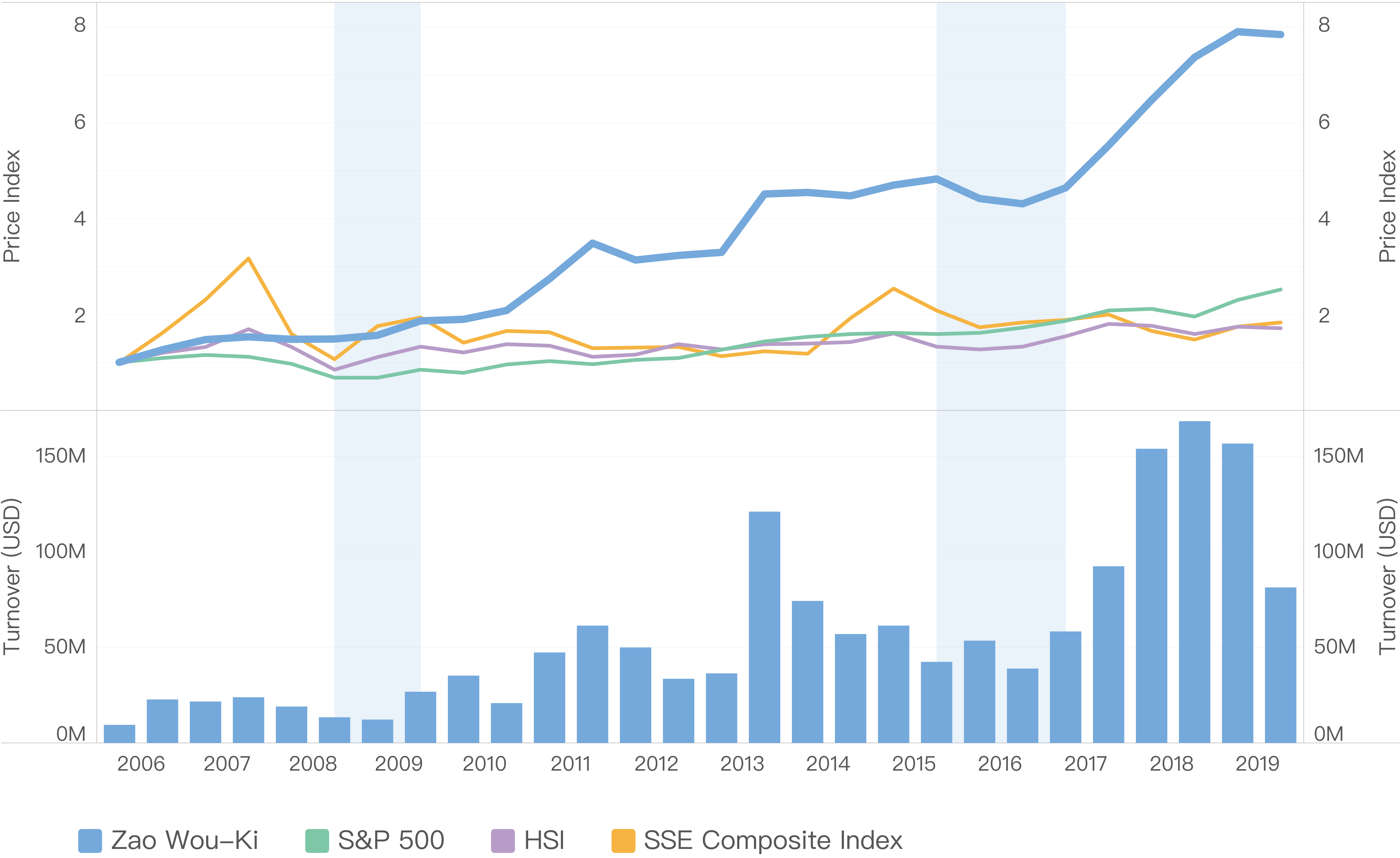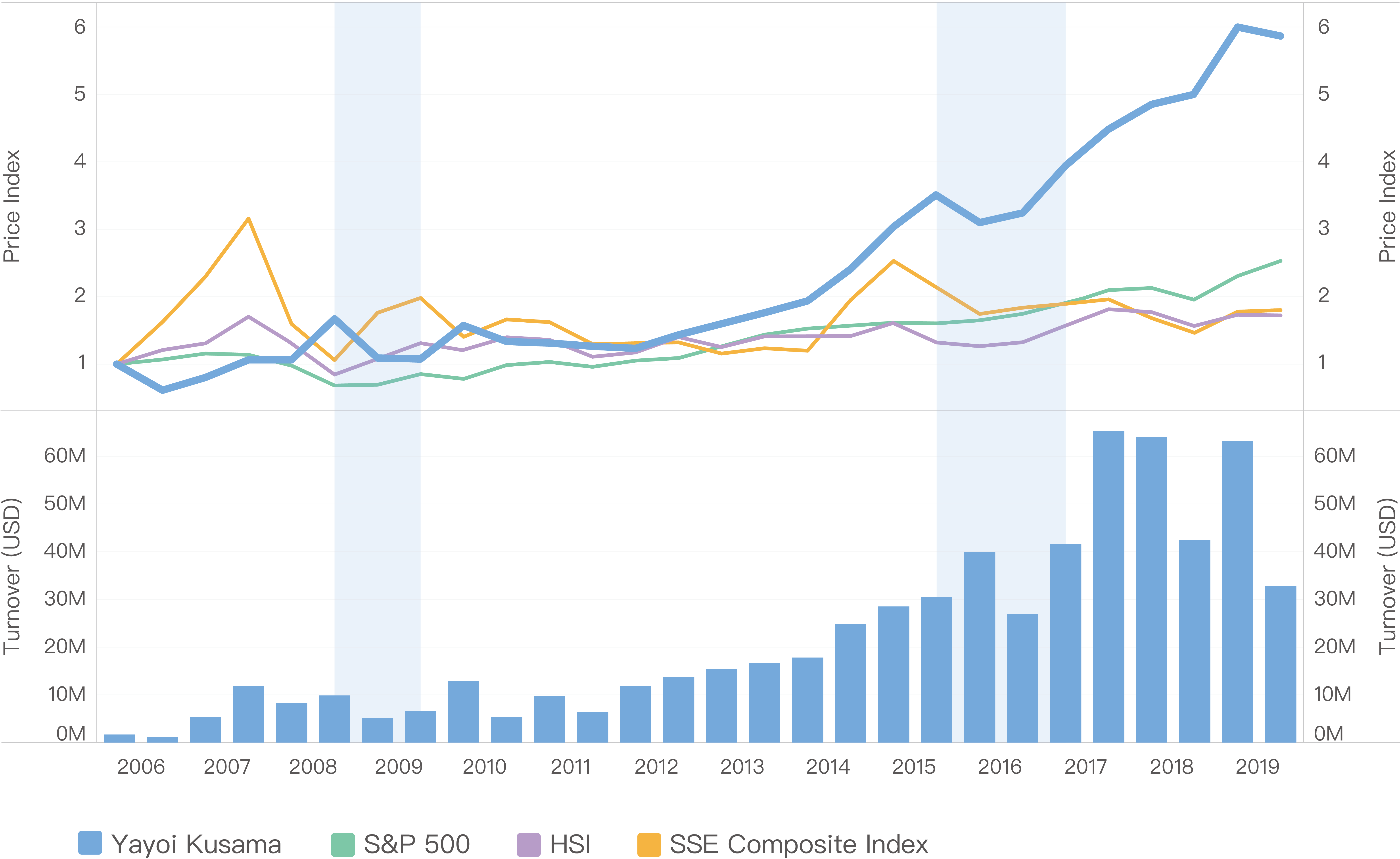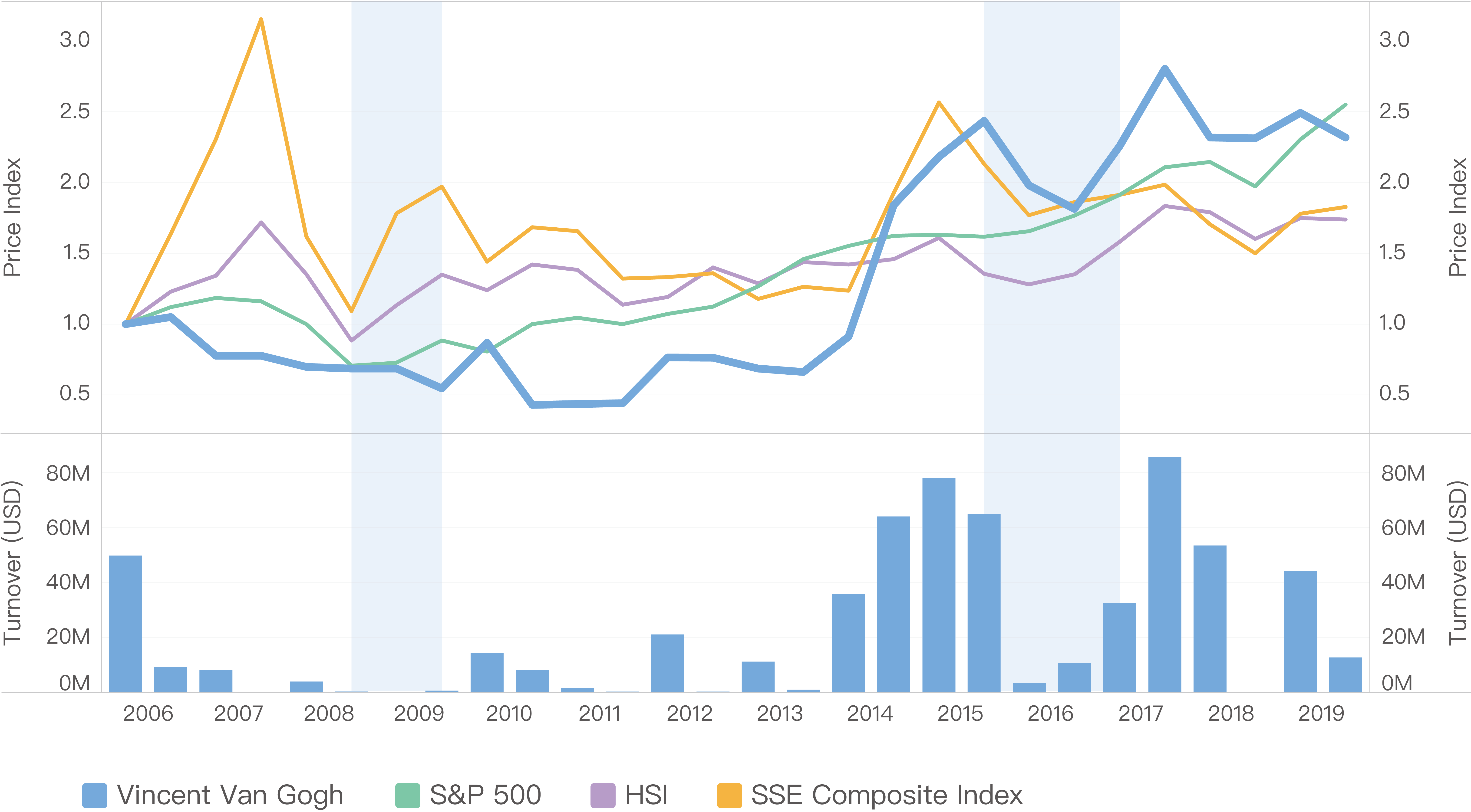【Features-Opening】There is a good opportunity for a rebound in the art market!
On the volatile market in 2020, it is time to look back and look forward.
The global economic market in 2020 has shown dramatic changes beyond imagination. The COVID-19 outbreak has brought the whole world into a state of emergency. On the other hand, the black swan in the crude oil market has once again impacted the weak market. The double impact has aggravated the global economic situation. It is eye-popping that circuit breakers halted trading on the US stock exchange four times in 10 days, and crude oil futures prices plummeted to negative territory is rarely seen in history. All of this makes people full of doubt and confusion about the future prospects.
Facing a crisis, some people will always take off against the wind, and others will be hit by the wave of the times. At this juncture, ArtPro has surveyed the global auction data since 2005, using the two economic downturns of the 2008 recession and the art market volatility in 2016 as samples, to explore what lessons can be learned to better get through the cold winter in the art circle. We will also provide a series of professional features of reference value for art lovers and collectors.
Part1 How is the global art performance during the recession

The two economic crises, to varying degrees have brought direct impact or indirect turbulence to the global economy and art market. The economic crisis in 2008 triggered shocks in the global financial markets, with stock markets bearing the brunt of the turbulence. Due to the time-lag, the art market under the financial turmoil has been hit hard since the second half of 2008. The price index has stayed in the bottom and total turnover has begun to plunge, hitting the bottom up to the first half of 2009. The market depression lingered on well into the second half of 2009.
Although the economic volatility in 2016 was not as devastating as the financial turmoil in 2008, the art market was still unable to avoid being affected in the interconnected global economy. From the second half of 2015 to the second half of 2016, the turnover of the global art market fell three times in a row. The total turnover in 2016 decreased by 26.5% compared with the previous year. The impact is obvious.
Part2 High returns are not groundless. Can the crisis bring a barrel of gold?
Be fearful when others are greedy, and be greedy when others are fearful. Interpreting the market with data, the historical experience always brings us some experience and lessons.
1. Representative Asian artists: the law of the market behind peaks and troughs
Zao Wou-Ki

Yayoi Kusama

Yoshitomo Nara

Although the art market cannot insulate from an economic crisis, there are new changes and new trends under the surface. Some artists’ price Indexes fluctuated greatly due to the crisis, but can recover or even rebound quickly after the crisis, such as Vincent Van Gogh and Yayoi Kusama. While other artists have strong anti-crisis capabilities. Their price indexes move in the opposite direction and rise to new heights, such as David Hockney, despite the economic market is sluggish. However, the market has never been set in stone, and even the price index of classic artists like Claude Monet has been zigs and zags.
On the whole, whether it is the economic market or the art market, when the crisis comes, not everyone or every region will meet their Waterloo. Every cloud has a silver lining. After the financial tsunami, the strong mainstay can still reach a new peak. There are a lot of artists in the market that outperform the market. High returns are not groundless. There is more information worth exploring behind the investment.
2. Representative European and American artists: Anti-crisis capabilities are not set in stone
Claude Monet

Vincent Van Gogh

David Hockney

It was the best of times, it was the worst of times. Throughout the world, the two economic crises have brought different degrees of shock to the art market. Although the prices of artworks have generally fallen, there have always been artists whose prices have remained stable or even showed an increase. Which artists can resist the impact of the crisis? When does the turning point of the market appear? What is the specific performance?
In this extraordinary period of 2020, ArtPro hopes to use history as a mirror to provide collectors with a series of rational and well-founded “Bargain-hunting Guide” in the art market. Next feature is 【Feature - Market】European, US and Asian art markets reacted differently in the past crises.
Never stop providing high-quality content. Clients who are interested in more analysis reports of art market can preview the market reports of your concern in another way. Based on the auction data of the global art market over the years, now at this stage ArtPro is giving professional art market reports for free. According to our users' interest, we're digging deeper into the market changes of artists and analyzing the changes in the art industry. Touch "Get Report" at the bottom left to get the report instantly,or you can continue to follow ArtPro updates and stay tuned for more highlights.

